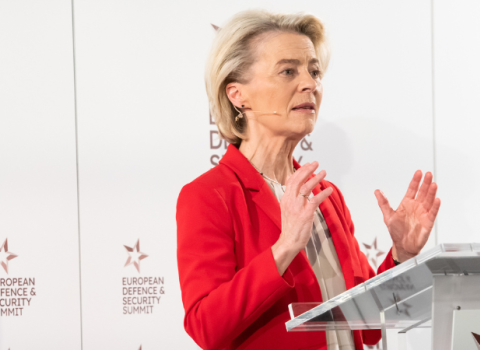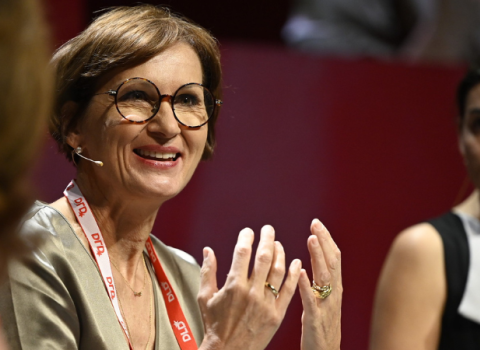Research lobby groups are still shaping their views on how the EU should go about funding military research

Photo credits: BigStock
Some university lobby groups have come out against the EU funding dual-use research, saying Horizon Europe and its successor, FP10 should remain exclusively civilian, while others have responded to an EU consultation on the subject by asking policymakers for more clarity on their proposal.
The Commission launched the consultation after publishing a white paper in January, proposing three different routes to boosting dual-use research. The first is to exploit synergies between existing programmes; the second to remove the exclusive focus on civil applications in “selected parts” of the next framework programme, FP10; the third option is to create a new instrument for dual-use technology development.
This has sparked intense debate in academic quarters because allowing dual-use research in FP10 would challenge the traditional separation between civil and defence research which exists in many countries.
LERU and CESAER, lobby groups that represent research-intensive universities, are backing the first option of exploiting existing synergies, while the European University Association (EUA) is calling on the Commission to provide more detail, saying, “it would be premature to express a preference” until the Commission can substantiate the merits of the three options.
Similarly, the trade group, the European Association of Research and Technology Organisations (EARTO), did not choose any of the options, and raised several questions for the Commission.
In an earlier paper, the European Federation of Academies of Sciences and Humanities (ALLEA) expressed strong opposition to the third option, and its concerns are widely shared in the latest reactions to the consultation.
Option 1
In its statement, LERU says it has a “strong preference” for the first option, as it could be implemented within the current long-term EU budget and have a greater impact more quickly, in a rapidly changing geopolitical context. It would also ensure FP10 remains open to international collaboration.
CESAER wants to maintain the exclusive civilian focus in Horizon Europe, while enhancing aspects of the current instruments beyond what the Commission proposed in its white paper. It refers to its stance as ‘Option 1.5’.
The group wants the EU to enhance the role of the European Defence Fund (EDF), the dedicated €8 billion programme, in developing dual-use solutions, and for greater effort to be made to encourage universities to participate in EDF.
While EARTO notes that this option would safeguard a dedicated budget for civilian research, both EUA and CESAER say the budget for FP10 should not be reduced in order to bolster EDF.
Option 2
The research world is not closed off to the idea of removing the exclusive civilian focus in FP10, but it is seeking reassurances that civil research will not be undermined.
Universities are concerned that dual-use technologies will dominate FP10 calls, shifting the focus to applied research, to the detriment of basic science. “This would fundamentally undermine the purpose and objective of EU Framework Programmes,” LERU says.
Likewise, EUA wants to know at which Technology Readiness Levels (TRLs) defence applications will be pursued, since industry is likely to dominate calls for high TRL projects.
Research organisations want more clarity about what this option would mean for budgets, as well as for researchers and their careers, if defence applications require stricter rules on open access to results and data.
There is also concern that removing the exclusive civilian focus would restrict the participation of 70 German universities – which have civilian clauses – and of researchers from non-EU countries like the UK and Switzerland.
EARTO says that while option 2 would have the positive effect of attracting more industry stakeholders into research projects, this should only be considered if it comes with an increased budget for FP10, and if all parts of the programme remain accessible to organisations with a civil clause.
“Restricting participation to parts of FP10 due to dual-use considerations risks the break-up of well-established international research networks to the eventual detriment of all involved,” LERU says. It suggests establishing a list of safe countries, and listing specific organisations for which advanced approval is required.
This has also caused concern among human rights organisations, with the Irish Council for Civil Liberties warning that options 2 and 3 go against the principles of open science and international cooperation. “Option 2 will normalise military research at academic institutions and will dissuade civil society organisations from engaging in joint research projects,” it says.
If this option is selected, LERU wants calls which could include military applications to be clearly flagged so universities can choose whether to participate, as well as an ethical assessment of the risk of military misuse, and for researchers to retain the option to prevent military applications of their research.
CESAER takes a firmer stance against removing civilian and defence distinctions in FP10. Funding military research in FP10 would require new conditions for grants, which could “hinder the free movement of researchers, the dissemination of scientific knowledge, and the transfer of technology,” it says.
“Experience shows that these activities need a distinct approach and processes compared to regular civilian operations,” said secretary general Mattias Björnmalm.
Option 3
There is no appetite among the lobby groups for a new instrument dedicated to dual-use technologies, because this would create unnecessary complexity, with new rules for participation. It can also be difficult to define whether a project has dual-use potential from the outset, so it would make little sense to segregate those projects in a new programme.
ALLEA warns that applicants could “game the system” by fabricating dual-use applications in order to submit similar proposals to FP10 and to the dual-use programme, putting further strain on evaluators.
The groups are largely in agreement that a clearer definition of ‘dual-use’ is needed in order to understand the consequences of each option.
As the war in Ukraine continues, Commission president Ursula von der Leyen has been clear about the need to invest in innovation to ensure Europe has the technological edge in future conflicts. EU governments, including in France and Germany, have suggested they would support more dual-use research at a European level.
“If Europe wants to be more secure and resilient, more investment in dual-use technologies is needed, as the separation between purely civil and military technologies is hardly possible,” EARTO said. But how that should be done is still very much up in the air.




 Follow where the public and private R&I money is going and which collaborative opportunities you can pursue.
Follow where the public and private R&I money is going and which collaborative opportunities you can pursue.